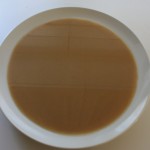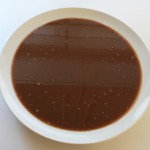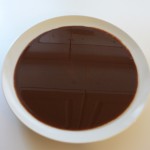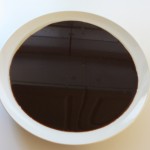“First you make a roux” is that ubiquitous phrase associated with classic New Orleans and South Louisiana dishes. It’s written about in many cookbooks, debated in lots of food circles and feared by many professional and home cooks. But what exactly is a roux (pronounced “roo”)? Well, a roux is nothing more than fat and flour cooked together to a desired color and thickening capability used to enhance stocks and other liquids. The concept is simple, but the flavor, texture and color a roux lends to a dish is anything but!
Since roux is the cornerstone of New Orleans cooking, learning how to make it is a valued skill and one I believe should be honored and passed down from generation to generation. So I’ve written several posts on the subject to demystify the process.
We define roux by its color and in New Orleans every chef and home cook has their own color palette. My color palette consists of white, blond, peanut butter, milk chocolate and black. A white roux is cooked just long enough for the flour to lose its raw smell and taste. The color will darken slightly to a pale ivory. I use this roux primarily for milk-based sauces like Béchamel. White roux is a French-Creole thing. You’ll find little, if any, reference to it in Cajun cooking. The other roux in my repertoire are:

Blond Roux
Blond has a yellow tint and smells like freshly baked sugar cookies. I like to incorporate a blond roux into vegetable sauces, light gravies and some soups.

Peanut Butter Roux
Peanut butter, named for its similar color and aroma, is more commonly known as brown roux or a medium brown roux. This is my go-to-roux for Crawfish Étouffée. It’s also perfect for rich sauces, soups and stews.
Milk chocolate is darker and richer than peanut butter roux but not as thin and bitter as black roux. The aroma at this stage is the strongest and smells like freshly roasted nuts. Some people refer to this as a dark brown roux. I tend to default to this roux for most of my dishes, from Chicken and Andouille Gumbo to Meatballs in Brown Gravy.
Black roux was created by Cajun cooks primarily for gumbo. This stage more closely resembles chocolate ganache and the aroma reminds me of dark roast coffee. Black roux should not be confused with a burnt roux, which needs to be trashed. I enjoy using black roux in my Seafood Gumbo and am always searching for more ways to incorporate it into my cooking.
White and blond roux won’t greatly affect the flavor of a dish but will make it thicker. They can be prepared with butter or oil. Darker roux will produce thinner dishes with more intense flavors. They rely on the higher smoking points of vegetable oil or lard. Recipes will generally guide you on the proper roux to use in each dish, but just remember that there are no strict guidelines. Once you become familiar with the different flavors and textures of roux, you’ll start creating your own favorite combinations.
So I hope you’ll try your hand at making a roux or reacquaint yourself with the pleasures of cooking with a roux. But before you do, check out my other posts on roux-making. How to Make a Roux will guide you through my time-tested process, my Top 10 Tips for Mastering a Roux will help you avoid the common pitfalls of a failed roux and Cooking with a Roux offers up a bunch of delicious dishes that will have you running for your skillet.
Genêt





